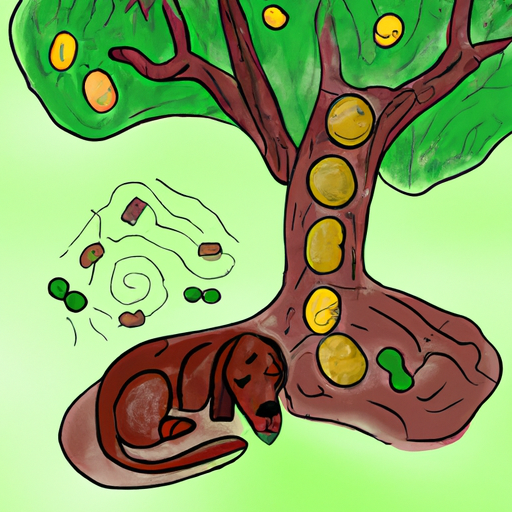Understanding Mango Worms
Mango worms, scientifically known as Cordylobia anthropophaga, are a type of parasitic fly larva that cause skin problems in dogs. The name “mango worm” stems from the misguided belief that they come from mango trees. However, it’s not the mangoes but rather the soil beneath them which these pests call home.
You, as a caregiver, may often find yourself perplexed by the sight of tiny, swollen bumps on your dog’s skin. These bumps are the breeding grounds for mango worms. The female flies lay their eggs in the soil, which hatch into larvae. These tiny creatures then find their way onto the dog’s skin when it lies or rolls in the infested soil.
The Life Cycle of Mango Worms
- Egg laying: The female fly lays her eggs in sandy or dusty soil. It’s here where the initial stage of the lifecycle begins.
- Larvae: The eggs hatch into larvae within 2-3 days. These larvae are minute and can easily penetrate the skin of dogs.
- Pupation: Once inside the host’s skin, the larvae feed on the tissues and grow into pupae.
- Adult flies: After 8-12 days, the pupae mature into adult flies. They leave the host’s skin and start the cycle all over again.
How Mango Worms Affect The Health of Your Dog
Mango worms can cause various health issues in your dog. The most obvious is the formation of swollen, painful bumps where the larvae have burrowed into the skin.
Here are some of the common symptoms you may observe:
- Red, swollen bumps on the skin
- Excessive licking or scratching at a particular spot
- Restlessness or obvious discomfort
Prevention and Treatment of Mango Worm Infestation
As the saying goes, prevention is always better than cure. Here are some steps you can take:
- Avoid Infested Areas: If an area is known for mango worms, try to keep your dog away from it.
- Regular Check-ups: Regular veterinary check-ups can help early detection of mango worm infestation.
- Proper Hygiene: Keeping your dog and its surroundings clean can help prevent mango worm infestation.
In case your dog is already infested, a vet will usually remove the larvae manually. Antibiotics and pain relief medications may also be administered.
Understanding The Global Distribution of Mango Worms
Mango worms are predominantly found in certain areas. Here’s a simple table depicting the global distribution:
| Continent | Presence of Mango Worms |
|---|---|
| Africa | High |
| America | Low |
| Europe | Rare |
| Asia | Rare |
| Australia | Rare |
Frequently Asked Questions
Q: Can mango worms infest humans as well?
A: Yes, mango worms can infest humans, but it’s rare.
Q: Do all dogs get mango worms?
A: No, not all dogs get mango worms. It largely depends on the geographical location and the dog’s exposure to infested soil.
Q: Can mango worms be fatal to dogs?
A: While mango worms themselves are not fatal, severe infestations can lead to secondary infections which can be life-threatening.
Q: How can I tell if my dog has mango worms?
A: Look for signs such as red, swollen bumps on the skin, excessive scratching, and restlessness.
Q: Can I remove mango worms myself?
A: It’s advisable to seek veterinary help for safe and effective removal of mango worms.



